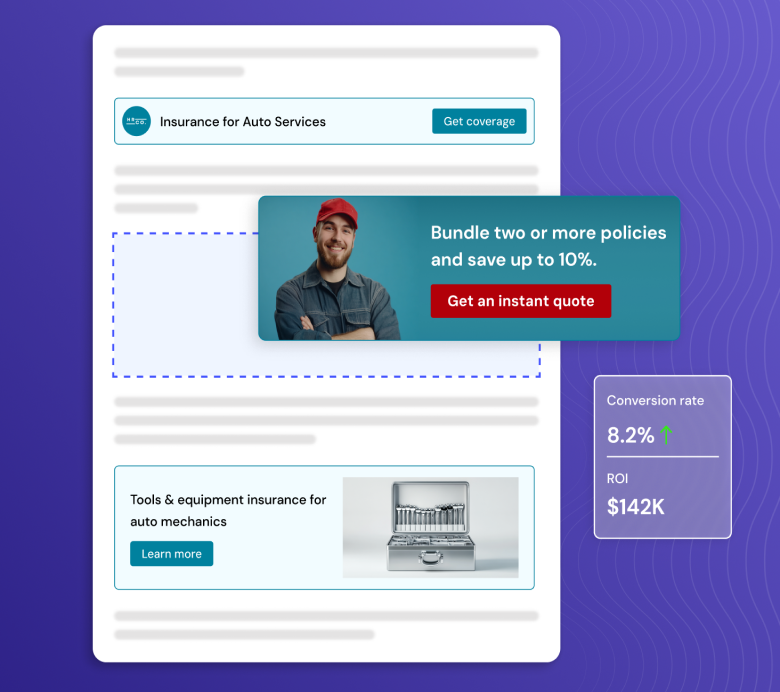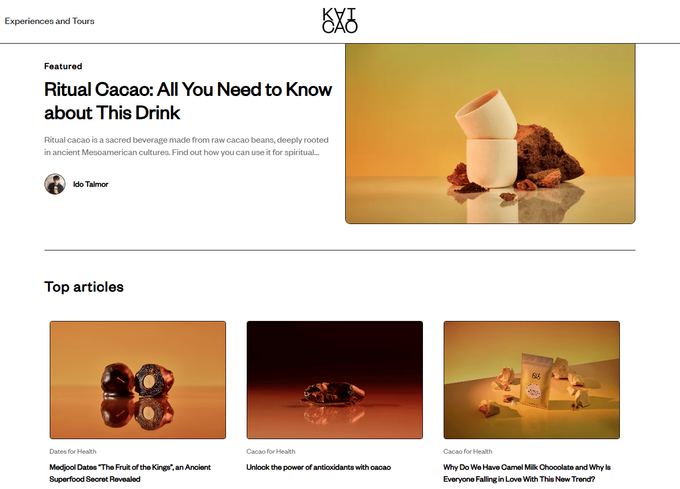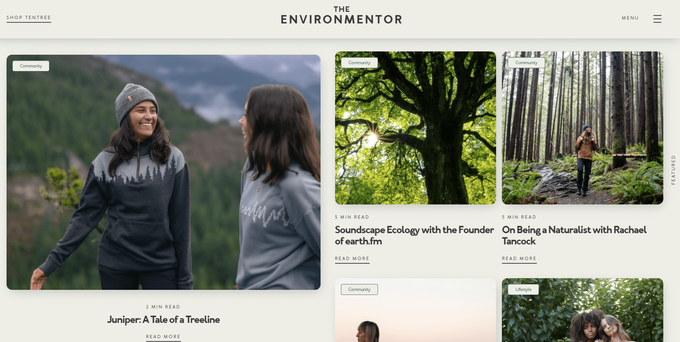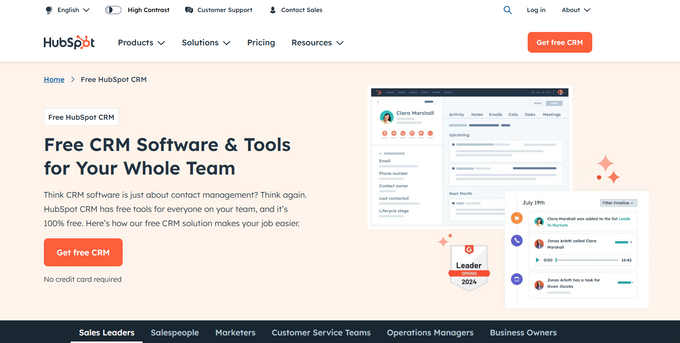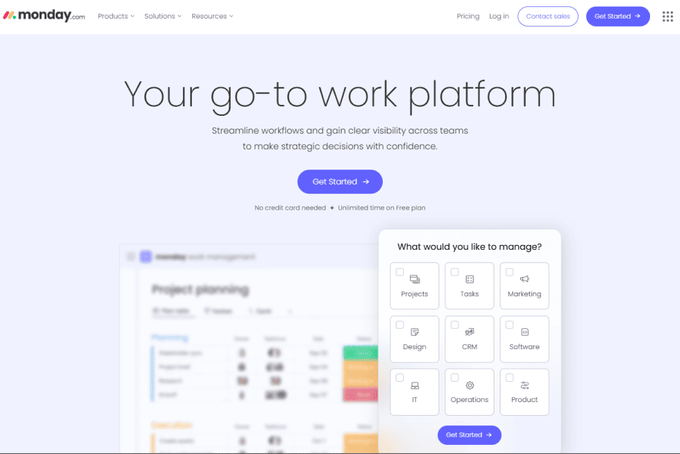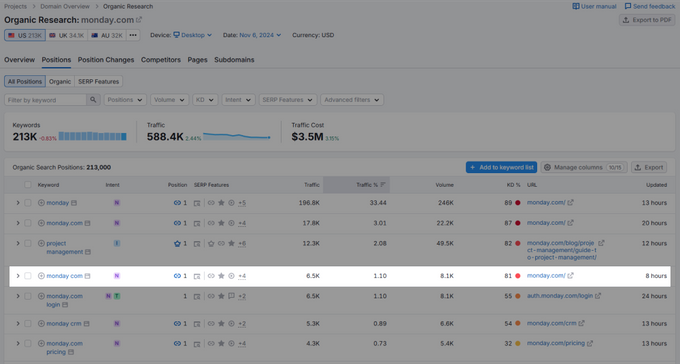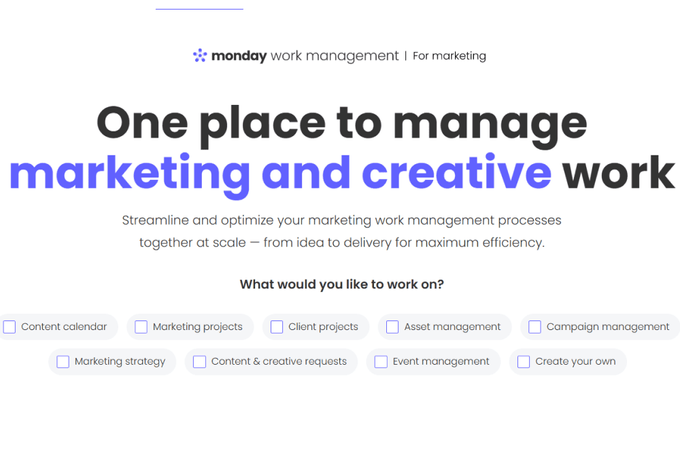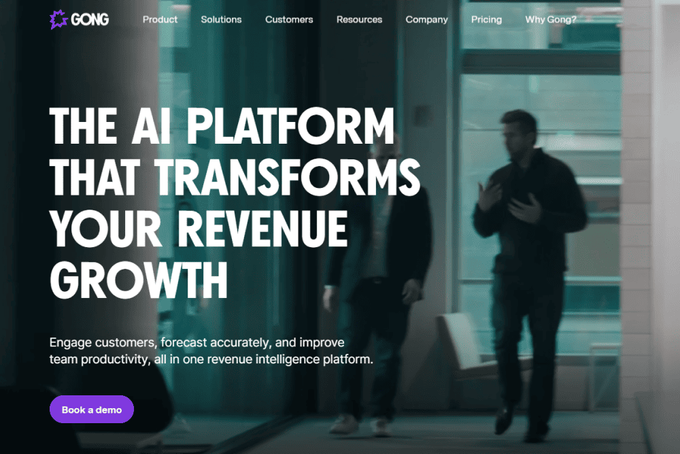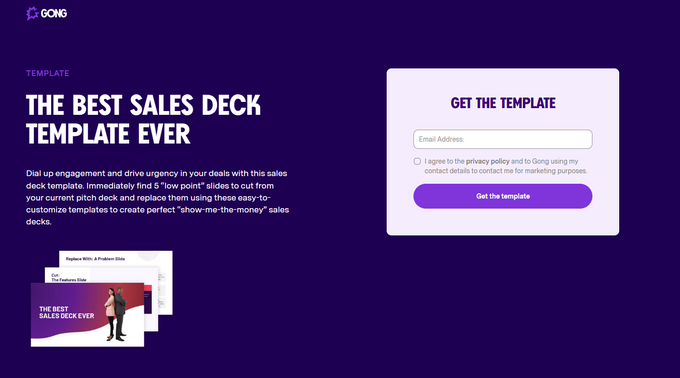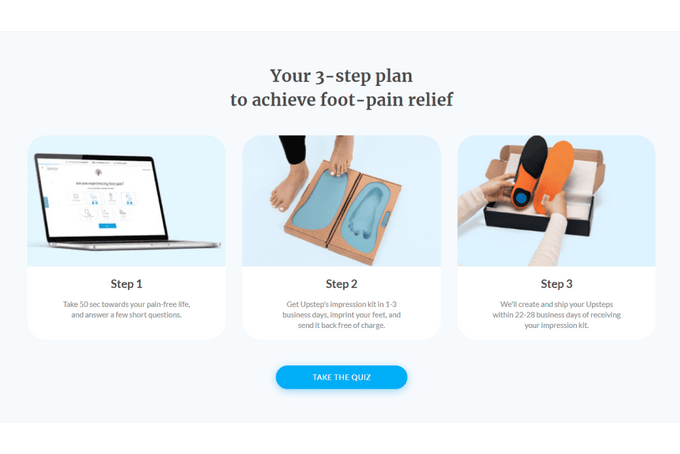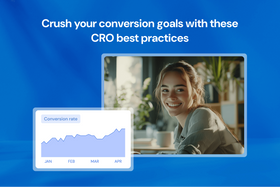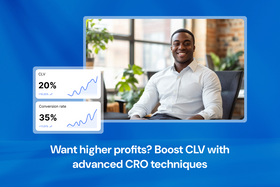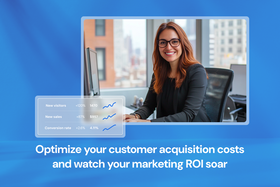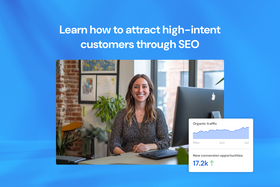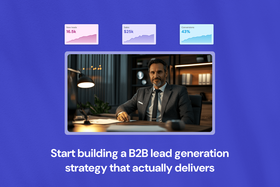14 conversion strategies to maximize sales and ROI in 2026
Explore conversion strategies that go beyond surface-level tactics to turn browsers into buyers.
Updated November 21, 2024
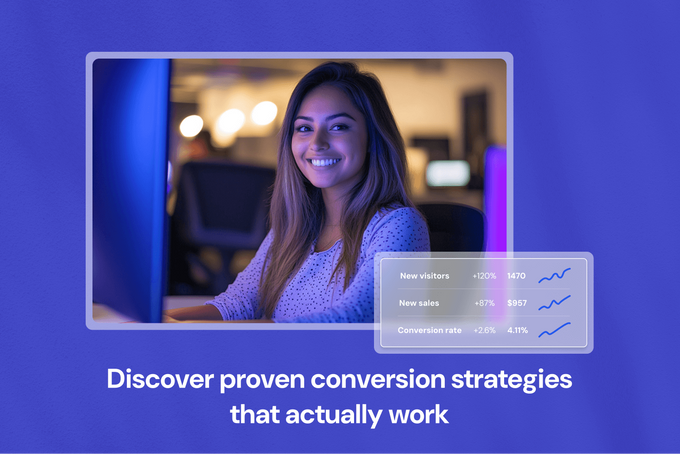
At its core, the goal of every marketing strategy is to convert sales. So, to create a truly effective strategy, start by focusing on conversion. With a proper conversion strategy, you can grow your entire marketing strategy and get more sales—no matter the channel. I'm not talking about minor tweaks like changing button colors and positions. That won't move the needle in a meaningful way. It's about building a funnel that works and knowing how to convert users.
In this article, I'll share a few conversion strategies focused on understanding the user journey and guiding users through the funnel toward conversion.
Key takeaways
- There's an endless amount of conversion strategies you can apply to your business.
- You need conversion strategies that guide you toward lasting results, not just small, quick wins.
- You have to be creative, analyze the data correctly, and keep testing until you find what works.
1. Define what counts as a conversion
The first thing you need to do is define what a conversion means for your business because it differs between companies, products, and websites. Is it a user downloading a guide, purchasing a product, or booking a demo?
There are also different steps in conversion. One type is someone seeing your ad or social media post, clicking it, and visiting your website. Another type includes a user going from the homepage to a product page and adding items to a cart. You can look at different types of conversions at different stages of the funnel.
» Discover the best SEO ROI tool to increase conversions.
2. Select the channels you want to use
You need to decide which channels to invest in, whether it’s email marketing, SMS, paid ads (like Google, Facebook, or Taboola), SEO, social media, or video. There are many options, so you need to define your channels and understand the funnel within each one. Then, for each funnel, break down the steps and consider how you’ll convert users at each stage.
» Find out if you should invest in SEO or PPC.
For example, let’s say you choose Google Search ads to target people searching for online therapy for anxiety. You’d first need to research whether this channel will work for you. Then, define the funnel: people click on your ad, go to your landing page, fill out a form, receive an offer, and book an online therapy session.
Your goal is to convert users at each step—from clicking the ad to scheduling a session. So, each channel, funnel, and step needs a slightly different conversion strategy.
» Discover the top CRO best practices to boost conversions.
3. Get to know your audience
To convert users, you need to understand not just where to find them but also where they have intent. Once you can do that, you can present a compelling value proposition that gets noticed and encourages them to convert.
For instance, if you’re selling a CRM to marketing managers, knowing where they’re having dinner doesn’t help—it’s not the right setting to engage them. But if they’re active in a LinkedIn group or a Twitter thread about CRM solutions, that’s where intent aligns with opportunity. The goal, then, is to put a relevant message in front of them that guides them to the next step in the funnel.
» Increase conversions with intent-based marketing.
4. Guide users through the funnel
The next strategy is guiding users through the funnel. You can use social proof to reassure them that others have chosen your product, helping them feel they’re not alone. Or, if your product is innovative, showing its uniqueness can make them feel like early adopters. Either way, the goal is to create trust and keep them intrigued.
» Discover why you should combine CRO and SEO.
Clearly communicate the value proposition of each step. For example, if the topic is anxiety, the first step might address why people suffer from it, followed by possible treatments, and then how your solution can help them. You could even offer a free trial to address any objections and give them a reason to take the next step.
5. Find what's blocking users from moving to the next funnel stage
Gone are the days when a simple ad could drive conversions. Today, people want to see quality products from trustworthy brands. But users don’t know you when you first start out, so you need to reach them and provide a value proposition that catches their interest.
Once you've ticked those boxes, they may have doubts that prevent them from moving forward. So, show them you're trustworthy. Use social proof and create more touchpoints—being exposed to your brand across social media, billboards, conferences, TV ads, email marketing, or word of mouth helps build trust.
It's also important to focus on identifying and addressing any objections or fears users might have, like concerns about pricing or how a product looks. It’s important to clearly demonstrate the product’s value while preemptively addressing these potential objections.
» Build topical authority to increase trust and rise to the top of the SERP.
6. Tailor your marketing strategy to your audience and value proposition
Another key conversion strategy involves analyzing your value proposition and the type of customers you're targeting and aligning your marketing strategy and creatives to fit both.
Let's look at a few brands that do this well.
Kaicao
If you sell a product like chocolate, it's mostly about branding, but Kaicao has a different angle and a unique story. Their chocolate is sustainably made using ethically sourced cacao beans and sweetened using only dates.
What Kaicao does well is recognizing that people usually search for a specific chocolate brand rather than just "chocolate." Most chocolate brands focus on branding alone, but Kaicao has a unique story that resonates with health-conscious consumers. This is a smart conversion and marketing strategy—using the story behind the product to reach their audience. Having a story tied to your brand means you can use information to sell your product.
Tentree
Tentree is another brand with a unique story. They're a sustainable apparel brand that plants ten trees for every item they sell. Their mission is to plant one billion trees by 2030 in an effort to reduce climate change.
Because of this, Tentree can create a lot of informational content related to sustainability and how the fashion industry affects the environment to sell their products.
AdCreative.ai
A company like AdCreative.ai is also a good example. Their product is new and unique, so for their go-to-market strategy, they used short informational videos featuring their founder to explain the product directly to marketers.
Since this isn’t an impulse buy but a tool for marketers, they needed to show how it can genuinely help. The videos covered the product’s value, features, and benefits, effectively reaching their target audience through the right channel. They recognized that their customers needed to understand this information and that it would be best delivered through video.
» Get expert advice on aligning your marketing strategy with your audience and value proposition.
7. Offer a free version of your product
If you're able to, offering a free version of your product is a great strategy for getting more conversions—especially if your product is complex.
Take Hubspot for example. They're a huge well-known brand, but their CRM is a super complicated product with tons of different options and automations. Not to mention, it can be challenging to get companies to add new products to their marketing stack.
So, to reduce friction and move users to the next step in their sales funnel, Hubspot offers a freemium model where you can start using the product for free. It would be expensive for companies to develop a CRM in-house, so they get a lot of value from it. They can even have an account manager show them how to use the product at no additional cost. Then, as users become more invested, they're more likely to upgrade to access additional features and get more value.
» Book a consultation to find out which conversion strategies will work for your business.
8. Understand your audience's pain points
Sometimes, the best conversion strategy comes from understanding what frustrates your audience. Take Monday.com as an example. They struggled to get their product off the ground until they discovered something interesting: people often blame their work management tools for being ineffective when the real issue is implementation.
Instead of fighting this perception, Monday.com used it to their advantage. They noticed developers particularly liked their tool, so they targeted this audience first. The strategy was simple but effective: get developers to start using and loving the product, then let them advocate to their team leaders about purchasing licenses for the whole team.
This bottom-up approach worked because it addressed a real pain point. And instead of trying to convince decision-makers directly, they let the end users do the selling.
» Map user journeys on your site to identify users' pain points.
9. Target the right keywords for what you're selling
Some of the most effective conversion strategies involve aligning your product with the keywords people are actively searching for. Monday.com demonstrates this brilliantly. They started as a work management platform but recognized a bigger opportunity. They realized their customizable boards could be organized to function as a CRM, so they could also position themselves as one.
Since the keyword "CRM" has high search volume and demand, this strategy allowed Monday.com to target an entirely new audience. Now, "Monday CRM" is one of the highest-volume searches they rank for.
» Discover content strategy software that solves keyword research.
10. Tailor your message to your target audience
When you have a versatile product, one-size-fits-all messaging won't cut it. Monday.com shows us how to do this right. While their core product remains the same work management platform, they've created specialized solutions for different teams—from marketing to sales to development.
A marketer looking at their marketing solutions page sees their product through a different lens than a sales manager viewing their sales solutions. It's the same platform, but the messaging, use cases, and examples are all tailored to speak directly to each team's specific needs. This personalization strategy works because it helps users envision exactly how the product fits their needs.
11. Create your product's own category
Often, the best way to stand out isn't by competing in a particular category—it's by creating your own. Gong did exactly this by establishing "revenue intelligence" as a brand new category. Rather than joining the crowded sales software market, they created a fresh space where they could define the conversation.
They built a strong brand specifically for salespeople in a category that nobody was searching for yet. By creating both the category and the demand for it, they could reach the right audience with the perfect unique value proposition and convert them.
» Not sure how to best position your product? Chat to a marketing expert.
12. Use informational content for paid campaigns
Another conversion strategy you can leverage is using paid campaigns to target users with informational content that converts. For example, Gong sends paid traffic to pages with gated content that requires users to enter their details to access.
They really understood that they're not selling a consumer product—it's B2B, and people need information and guidance. So they create a lot of gated content and direct their traffic there. Then, they convert that traffic later, after people have consumed the content and seen the value.
» Find out how you can foster trust by creating authentic, expert content.
13. Build a strong brand
Brand building has become a powerful conversion driver in today's digital world. As AI floods the internet with untrustworthy content, consumers are more selective about where they spend their money. So, the key is to create a brand they trust or can resonate with.
Let's look at two quick examples.
Dr. Squatch
Dr. Squatch transformed ordinary soap into a strong brand through personality and humor. Their content was so well received that their YouTube videos alone have reached over 400 million views. They made people actually care about soap by creating content people actually want to engage with.
» Engage your audience by creating SEO content for every funnel stage.
Scrub Daddy
Scrub Daddy followed a similar path to differentiate themselves from generic cleaning supplies. A simple smiley face design turned a basic sponge into a memorable brand. Suddenly, cleaning products have a personality, and people will remember that cheerful sponge the next time they shop for cleaning supplies.
When people connect with your brand, they naturally gravitate toward your products. And if you maintain a strong brand identity over a long time, customers tend to stick around because they know they can trust you. So, cementing a brand identity as early as possible will build trust and, eventually, lead to sustained conversions in the long run.
» Speak with an expert for actionable ways to grow your brand.
14. Use questionnaires to personalize your value proposition
Questionnaires can also drive up conversions when you build them into your content. Instead of giving everyone the same generic experience, questionnaires allow you to help individual visitors find exactly what they need.
Upstep does this to help people find orthotics for foot pain. Since people's foot problems differ widely, Upstep walks you through specific questions about your unique situation. This way, you're not overwhelmed by their whole catalog of orthotics, and you see exactly how they can help you.
When you use questionnaires like this, you're basically turning your value proposition into something personal for each customer—and that's what drives conversions.
When you know your audience, you win
Every successful conversion strategy starts with understanding your audience. But that's not all. You need to focus on personalizing your pitch to meet users where they have intent—whether that's by offering tailored solutions to their pain points, creating demand in new categories, or building lasting trust.
Ultimately, success comes from aligning your conversion strategy with how your users actually make decisions—and making sure you're the obvious choice.
